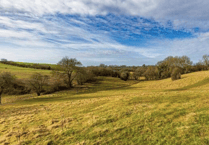RESEARCH co-authored by a lecturer at Hartpury University suggests that older adults experience less muscle soreness following exercise, contrary to the belief that ageing muscles are less resilient.
The study entitled “Advancing age is not associated with greater exercise-induced muscle damage” was published in the Journal of Ageing and Physical Activity and co-authored with Dr John Fernandes, Dr Laura Wilson, Ms Amelia Dingley, Dr Kelsie Johnson, Professor Craig Twist, and Dr Kirsty Hicks.
The research analyses how ageing affects muscle function, soreness, and biochemical markers of muscle damage after exercise. Researchers found that older adults (aged 35+) do not experience greater muscle function loss after exercise compared with younger individuals (aged 18-25).
Andrew Hearn said: “This research is important as it contradicts the common assumption that ageing muscles heal more slowly or are more susceptible to damage from exercise.
“This misunderstanding can deter older individuals from staying active, as they may worry about extended recovery times or increased risk of injury. Exercise has so many benefits not just for our physical health, but also our mental health, something that’s particularly important to raise awareness of during Mental Health Awareness Month.”
The findings suggest that, despite physiological changes as we age, muscle resilience remains relatively stable, allowing older people to continue engaging in physical activity, without concern for prolonged weakness.
Post-exercise care could now be adjusted accordingly. For example, older adults may not require significantly prolonged recovery periods compared with younger individuals, potentially allowing for more frequent training sessions or higher intensity workouts.
Hartpury University said: “The study reinforces the importance of staying active throughout life and dispels myths that ageing equates to frailty or impaired recovery. These findings could contribute to greater participation in fitness activities among older adults, improving overall health, mobility, and quality of life in ageing populations.”





Comments
This article has no comments yet. Be the first to leave a comment.